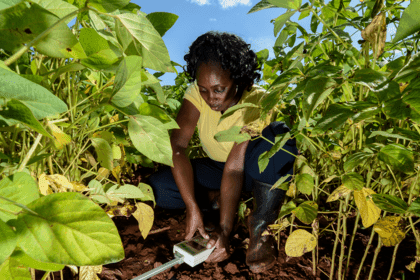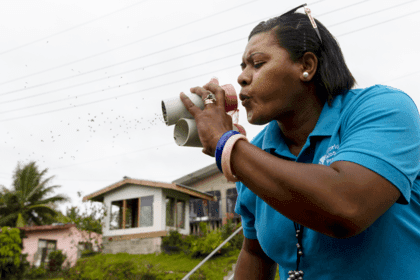
The next pandemic: Why deforestation in DRC could release new viruses
Covid-19 alerted the world to the devastating potential of pandemics in the 21st century. Photojournalist Hugh Kinsella Cunningham and writer and public health professional, Amelia Goldsmith, document how the lasting effects of colonisation, including the unbridled exploitation of natural resources, in the Democratic Republic of the Congo, could expose humanity to the next supervirus.
The Democratic Republic of the Congo’s (DRC) unique natural environment and colonial legacy makes it one of the most complex global health security environments in the world. In addition to a large diversity of resources, the region’s biodiversity has historically been responsible for some of the world’s most consequential novel viruses including HIV and Ebola. The risk of a new pathogen coming into contact with human populations for the first time is elevated in areas with high biodiversity like DRC.
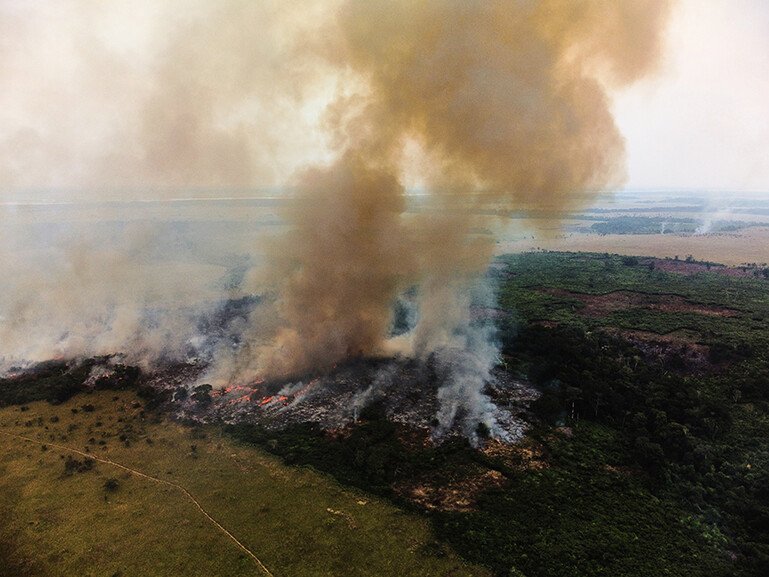
Hugh Kinsella Cunningham
Aerial views of bush fires started by farmers in Kwilu province. Destruction of habitat can force animals to move into new areas and come into contact with human beings for the first time, increasing the dangers of spreading viruses.
Hugh Kinsella Cunningham / Wellcome Photography Prize 2021
Human activities like deforestation, hunting for bushmeat and the exotic animal trade increase the risk of exposing people to pathogens carried by animals that have not yet been exposed to human populations. These are what we call zoonotic diseases. When these diseases jump from animals to humans, human to human transmission in rural areas can, in turn, lead to more widespread transmission in urban settings.
Mammals and birds are estimated to host 850,000 undiscovered viruses, which scientists believe have the potential to infect people. Viruses such as HIV, Ebola, SARS, and Covid-19 are examples of pathogens that began circulating in animals, but later experienced sustained transmission in human populations. With deforestation and habitat loss, animals are more likely to move into new areas and come into contact with people.

Hugh Kinsella Cunningham
Muzuka is a six-year-old mountain gorilla. She was rescued from a poacher’s snare, losing her foot in the process. Virunga National Park operates a shelter for gorillas that have been orphaned or rescued, giving them a safe place to live, free of intrusive human contact.
Hugh Kinsella Cunningham / Wellcome Photography Prize 2021
‘The fact [is] that the health of the environment and the development and expansion of these terrible diseases are profoundly interlinked’, says Emmanuel De Merode, warden of DRC’s storied Virunga National Park. ‘Every Ebola epidemic since the original one recorded in the mid-1970s found its origins in an area of massive deforestation.
In 2018, eastern DRC saw its first cases of Ebola. The North Kivu Ebola epidemic, which lasted until 2020, claimed more than 2,000 lives. Having never encountered Ebola before, distrust and tension increased between the local communities and aid workers. Conspiracy theories easily spread about the intentions of international actors, such as UN agencies and NGOs, to enrich themselves with foreign aid money. This fueled doubts about whether Ebola existed at all – a precursor to reactions seen across the world during the spread of Covid-19. When infectious disease outbreaks occur, infodemics of misinformation also proliferate.
The 2018-2020 Ebola epidemic failed to spread east or west through the national park. ‘The fact that it was successfully contained is tied to the natural firewall that was created by a healthy ecosystem that buffered the spread of the disease’, noted De Merode.
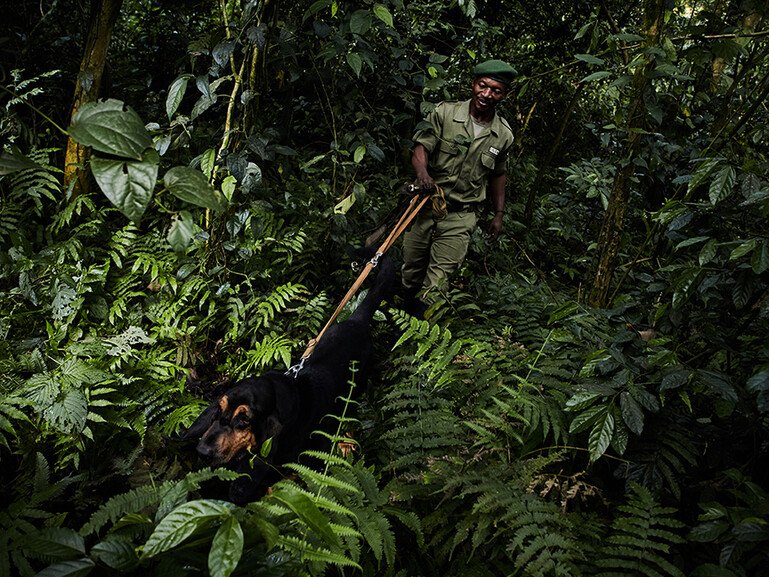
Hugh Kinsella Cunningham
Fidel Bahati and Bonus the bloodhound, part of the ‘Congo Hounds’ sniffer dogs unit in Virunga National Park. By patrolling this conservation zone, they protect the wildlife from poachers and others, and they protect the global human population from the risk of a new virus jumping species.
Hugh Kinsella Cunningham / Wellcome Photography 2021
It’s not just deforestation that increases the threat of new viruses emerging. Poverty and regional instability also amplify the risks of disease spillover in DRC.
Congo remains one of the most disenfranchised and impoverished countries in the world. Decades of European colonisation severely damaged DRC’s ability to develop a robust economy. This, in turn, affected the country’s ability to build a health system that could sustain the basic needs of nearly 90 million people. A weakened health system represents an underappreciated risk for a novel pathogen to emerge.
More than 72% of the population lives on less than $1.90 a day, which makes free sources of food like hunting and bushmeat, an essential avenue for sustenance and income in parts of the country. Poaching in conservation areas is also common. The exotic animal trade is an attractive source of revenue as Congo hosts many rare animals including chimpanzees, gorillas and pangolins.
With increasing pressure on land space caused by forced displacement in neighbouring countries like South Sudan and the Central African Republic, large population movements of vulnerable people are fleeing into DRC and its tropical zones. This threatens to expose untouched, natural habitats to human settlements, increasing the risk of a new virus jumping from animal to human populations.
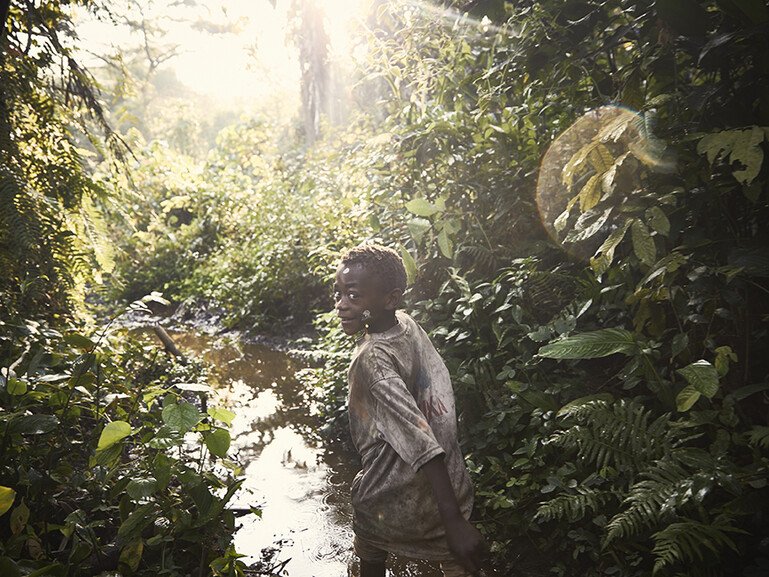
Hugh Kinsella Cunningham
An Mbuti boy runs through the Ituri rainforest. Numerous communities live here alongside the huge variety of wildlife, hunting on a small scale. Contact between these people and animals is a daily fact of life.
Hugh Kinsella Cunningham / Wellcome Photography Prize 2021
Covid-19 has alerted the general public to the reality of emerging viruses as a threat to global security. Despite this, there is minimal awareness of the unique combination of factors that make tropical regions distinctly high risk for the emergence of novel viruses which could evade public health strategies for containment.
While the Covid-19 outbreak began in Wuhan, our highly globalised world made it possible to rapidly transport viruses across the globe. The more extensive the local transmission of a new virus, the more challenging it is for traditional public health mechanisms to prevent it from arriving in new cities. The contemporary environment in DRC makes it an especially high risk for extensive community transmission of a novel disease.
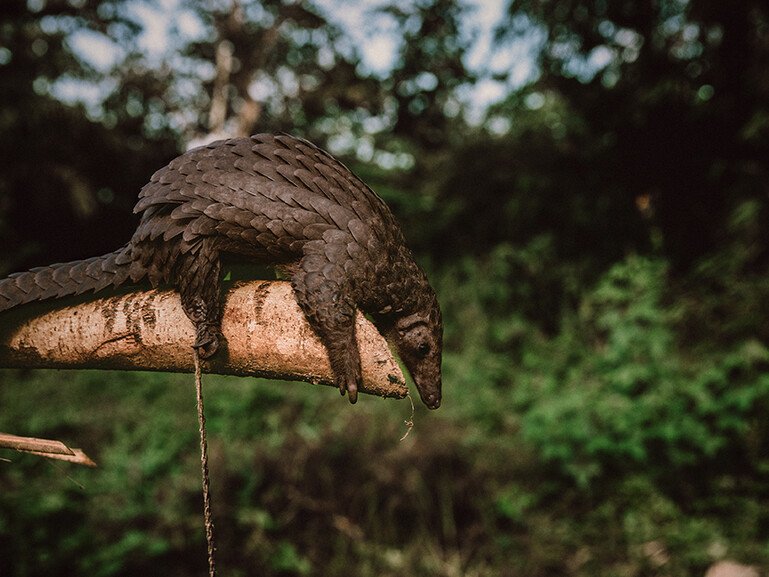
Hugh Kinsella Cunningham
A pangolin captured by hunters in the Ituri rainforest. The animal trade can be lucrative, as Congo hosts many exotic animals including pangolins – suspected to be involved in the emergence of the novel coronavirus. But hunting means more human contact with these animals and any pathogens they carry.
Hugh Kinsella Cunningham / Wellcome Photography Prize 2021
The weak health system in DRC and the resultant health security weaknesses could expose all of humanity to a dangerous novel virus. In such a biodiverse place, this has grave implications for the potential of a deadly virus to spread in a setting with limited resources. It’s not a matter of if a new virus emerges from DRC’s highly biodiverse natural habitat, but when.
How are infectious diseases impacted by climate change?
Climate change can intensify the transmission and incidence of vector-borne diseases.
In general, the warmer temperatures get, the more opportunities there are for diseases to thrive.
A study published in the Lancet Planetary Health estimates that up to 8.4 billion people could be at risk from two major vector-borne diseases – malaria and dengue – by the end of the century if emissions keep rising at current levels.
Even if the world succeeds in limiting greenhouse emissions and reducing global warming, billions of people still stand to be affected.
Felipe Colón, Technology Lead at Wellcome, shares what we can do to prepare.
This reporting for this story was supported by the Pulitzer Centre on Crisis Reporting.


